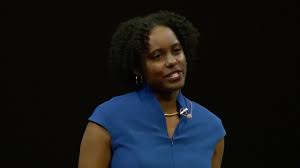In his TEDxCroydon talk, “Diversity, Equity & Inclusion: Learning How to Get It Right,” Asif Sadiq, a seasoned DEI expert, explores the transformative potential of diversity, equity, and inclusion (DEI) in organizations and society. Asif Sadiq’s message is clear: DEI isn’t just about policy changes or hiring quotas; it’s about a meaningful shift in how we perceive and treat people in our communities and workplaces. Here’s a closer look at Sadiq’s insights, which are aimed at helping organizations get DEI right.
1. Moving Beyond "Tick-Box" Diversity
Sadiq emphasizes that DEI efforts often fall short because they focus on “tick-box” diversity, where organizations merely aim to meet diversity metrics. This approach, he warns, is superficial and fails to address deeper issues. True DEI requires active engagement and long-term commitment to fostering an inclusive culture where every individual feels valued. It’s not enough to simply fill quotas; companies must create spaces that recognize each person’s unique contributions and perspectives.
Key Takeaway:
Instead of hiring for diversity alone, Sadiq advises companies to build a culture that values and includes diverse voices in decision-making. This way, diversity translates into real change, benefitting both individuals and the organization as a whole.
2. Equity as a Foundational Principle
Sadiq makes a clear distinction between equity and equality. He argues that equity recognizes the unique needs and challenges of each person, ensuring everyone has the tools and support they need to succeed. Unlike equality, which treats everyone the same, equity acknowledges that people start from different places and that fair treatment may require giving some individuals more support than others.
Key Takeaway:
Organizations need to understand that fairness doesn’t mean uniformity. Instead, achieving true equity means tailoring opportunities, resources, and support to meet people where they are. This approach allows everyone the chance to perform to the best of their abilities, leveling the playing field in a way that mere equality cannot.
3. Inclusion as an Everyday Practice
Sadiq’s perspective on inclusion is particularly insightful. He stresses that inclusion should be an integral part of daily interactions and not a sporadic effort. Inclusion means creating an environment where everyone feels they belong and can bring their full selves to work. This requires openness to learning from and understanding the experiences of others, as well as a commitment from leadership to foster a sense of belonging.
Key Takeaway:
To practice genuine inclusion, organizations must go beyond isolated initiatives and focus on building a culture that naturally includes diverse voices in discussions, projects, and decision-making processes. It’s about embedding inclusion into the organizational DNA so that it becomes the norm rather than the exception.
4. The Role of Empathy and Education in DEI
A critical aspect of Sadiq’s talk is his emphasis on empathy as a core component of DEI success. For DEI initiatives to resonate and be effective, leaders and team members alike must understand and empathize with each other’s experiences. This empathy can be fostered through continuous education, training, and open dialogue.
Sadiq notes that empathy isn’t just about feeling for others but truly understanding their perspectives and the challenges they face. Educational programs and workshops are essential in equipping people with the knowledge they need to appreciate and celebrate differences, allowing DEI to move from concept to action.
Key Takeaway:
Organizations can drive meaningful DEI change by incorporating ongoing education, building empathy, and creating safe spaces for honest conversations about identity, privilege, and equity. This helps everyone in the organization understand DEI’s importance on a personal level.
5. Measuring Success in DEI Efforts
One of the main challenges in DEI initiatives is determining what success looks like. Sadiq advises that success in DEI should not be measured solely through metrics such as the number of diverse hires. Instead, it should also be evaluated based on employee satisfaction, retention of diverse talent, and the presence of an inclusive culture that allows all employees to thrive.
Key Takeaway:
Effective DEI metrics look beyond numbers to assess how well an organization is creating a supportive and inclusive environment. Organizations should ask whether employees feel valued and whether there are real opportunities for advancement for individuals from diverse backgrounds.
Final Analysis: DEI as a Path to Innovation and Growth
Sadiq’s TEDx talk sheds light on a common misconception: that DEI is solely about corporate responsibility or social justice. He argues that DEI is also a powerful tool for innovation, creativity, and business growth. By embracing DEI, organizations open themselves to a wealth of ideas, perspectives, and solutions that can only arise from diverse teams working together in an inclusive environment.
In today’s rapidly changing business landscape, a commitment to DEI isn’t just the right thing to do—it’s essential for long-term success. Sadiq’s insights encourage leaders and teams to reflect deeply on their own DEI practices and to aim for lasting change through empathy, education, and equity.
In Conclusion
Asif Sadiq’s message serves as a call to action for companies to go beyond superficial DEI measures and commit to creating an inclusive, equitable environment for all. His insights remind us that true DEI isn’t a destination, but an ongoing journey, requiring dedication, empathy, and an openness to growth. For organizations striving to “get it right,” Sadiq’s principles provide a meaningful framework to build a culture that values every individual, fosters innovation, and ultimately drives success.






























